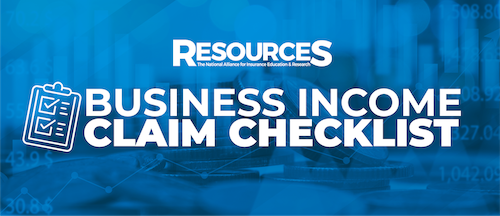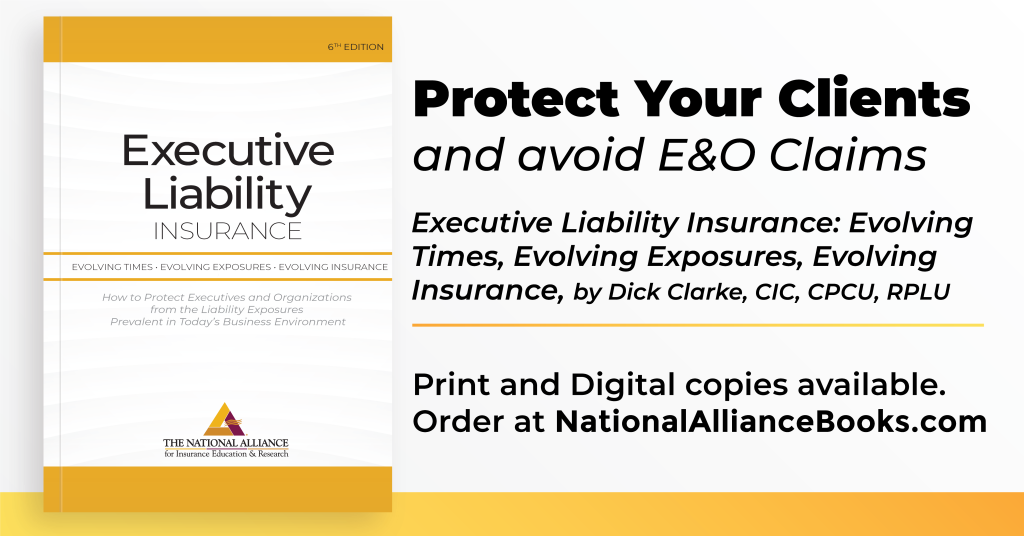
By Keith Wilts, CIC, CPCU: Keith provides education and support to the insurance community in the understanding and application of business income and extra expense coverages at the time of loss. He holds the CIC and CPCU designations and has over 40 years of experience involving production and consulting activities on commercial, personal, and farm insurance. Keith earned his CIC designation in 1981 and has served as CIC National faculty and Ruble faculty since 2002.
Winnie and Business Income Loss Adjustment
Winston Churchill said, “the farther backward you can look, the farther forward you are likely to see.” It’s the same with the business income loss adjustment process. One of the best indicators of the insured’s situation is the history of the business. Experience shows that history tends to repeat itself, therefore we can apply historical information to project or predict the future. For example, if sales, production, fees, commissions, and other forms of revenue have historically increased an average of 10% per year, it is reasonable to predict that in the year in which the loss occurs, sales would have also increased by 10%.
The insurance policy expresses the extent of coverage provided for such losses; however, coverage provisions must be applied based on the facts of the loss suffered by the particular insured. Much of the effort involves analysis of data and documents to project what the insured’s financial future would have been.
Business Income pays for lost income until the damaged property is repaired or the limit is exhausted. The property could be real or personal property and does not have to be owned by the named insured. Marine Coverage Forms state the coverage is limited to covered property or property not otherwise excluded in the coverage form. The suspension must be a result of a Covered Cause of Loss. Extended Business Income continues payment after the end of the Period of Restoration until revenue returns to its pre-loss level.
An Example of a Business Income Claim
The situation that typically exists when I get involved in a Business Income claim is that the damage occurred three to six months earlier. The property carrier has paid the Actual Cash Value (ACV) of the damage and repairs are well underway. However, the only movement on the business income portion of the loss is that the named insured has provided three to five years of financial data to a Forensic Accountant engaged by the insurer.
The two most common “actual loss sustained” business income policies use of the following two approaches or methods to compute the amount of covered loss:
- Gross Earnings Method: Gross earnings less all non-continuing expenses = Actual Loss Sustained Amount
- Net Income Approach: Net profit plus continuing expenses (including payroll) = Business Income Amount
The intent of both contracts is to arrive at the same result, which is to place the business where it would have been had there been no interruption. The Net Income approach has become the industry standard since the Commercial Package Policy was first introduced in 1986 by the Insurance Services Office and the Gross Earning forms were withdrawn. The process of computing the limit of insurance is the same process used to compute the loss of business income.
Stubborn About Goals, Flexible About Methods
The goal of Business Income Coverage is to reimburse the Named Insured for any profit the business would have made, plus all costs that continue during the suspension, but not expenses that do not continue. The questions used to select a limit of insurance can also assist in determining the amount payable at the time of loss. Consider these three questions:
- How Long Will It Take to get your operations back to normal? What internal and external factors influence the length of time?
- When Is the Worst Time for the possible or probable loss to occur? Assume that the estimated suspension happens during your peak sales or production time of the year.
- How Much Loss? The projected loss will become the basis of selecting the Business Income and Extra Expense limit of insurance.
Selection of the Coinsurance Percentage
This is based on an estimate of the limit of insurance, not the time required to restore operations. Keep the following in mind:
- Determining the basis of coinsurance is the purpose of the Business Income worksheet.
- The limit of insurance is based on Net Profit and Operating Expenses that continue.
- The coinsurance percentage selection is determined by dividing the basis of coinsurance, which is the total net profit and all non-deductible operating expenses by the projected limit of insurance.
A Coinsurance Example
For example, a loss that causes the insured to suspend operations during the peak six months of the year could result in a loss of 80% of net profit and operation expense for the year (although the estimated period of restoration represents 50% of the year). Using the limit of insurance as the basis of selecting the percent versus time, 80% coinsurance would result in a rate that is roughly 25% lower.
The ISO Business Income worksheet is not a tool designed to compute a limit of insurance. The worksheet’s purpose is to determine the minimum limit required to satisfy coinsurance. Coinsurance is based on the combination of net profit and ALL operating expenses.
The Insured’s Responsibility
It may seem unfair to require the insured to carry a dollar amount that includes ALL operating expenses while the policy only pays the expenses incurred or continued. This situation is the same in every property policy. For example, the Building and Personal Property coverage form requires the insured to carry an agreed percentage of the value of ALL covered property. However, payment is limited to the property which is damaged.
The insured’s responsibility is to prove the loss when submitting a direct or indirect property claim for payment. The insured must document the damage and calculate the loss based on the wording in the insurance contract.
More Questions Than Answers
The most important part of the Business Income loss adjustment process is knowing what questions to ask. W. Edwards Deming, an eminent scholar and teacher in American academia for more than half a century, said “If you don’t know how to ask the right question, you discover nothing.” The following are questions I use to discover all I can about the insured’s business procedures and practices.
How To Verify Business Income Loss
I am often asked to compute or verify loss of profit and operating or extra expenses sustained by an insured who has suffered a significant Business Income loss. Frequently, the task is complicated because the amount of loss is affected positively or negatively by breach of contract, loss of personnel, negligence, or other liability factors, changing economic or business conditions, governmental intervention, or man-made or natural disaster (i.e., conflagrations such as forest or wildfires, pandemic, internal or external terrorism, hurricane, derecho, flood). The facts and characteristics of each loss are unique and must be approached as such.
The “But For” Method
The “but for” method analyzes what did and did not take place, and what would have happened had the loss not occurred. It involves examining traditional financial measurement tools, including profit and loss, income statements, and payroll records. Determine the net profit that would have been earned during a specified period if the covered loss had not occurred.
The “but for” projections are compared to actual results achieved during that same period with measurement and analysis of variations. The difference may represent increased or decreased business income loss damages sustained due to the triggering event, or the contingent loss of income or extra expenses.
Internal factors that may impact the projections can include adding a new product line, losing a key customer, loss or gain of key employees, or the gain or loss of a significant contract before the triggering event. These internal factors may result in either an increase or decrease in the projections relative to the historical trends.
External factors may include changes in technology, entry or exit of a competitor in or changes in industry practices or methods, and tax laws. The key to using projections, which differ from historical trends, is identifying and supporting the basis for the difference. Any projection must include some amount of estimation and stated assumptions. The general assumption is that history will repeat itself.
Albert Einstein was once asked by a student, “Aren’t these the same questions as last year’s final exam?” He responded, “Yes, but this year the answers are different.” The ultimate goal of Business Income coverage is to protect an insured’s business plan. The questions asked at the time of loss are the same as those that must be answered when the coverage is written. Our responsibility is to ask the right questions.

Business Income Claim Checklist
The most important part of the Business Income loss adjustment process is knowing what questions to ask.
This checklist includes questions you can use to discover everything about an insured’s business procedures and practices.














































